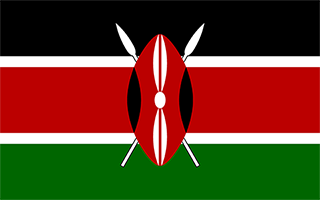Facts and Data
Webpages:
Official Unesco Page
Protectedplanet.net
Basis Data:
Unesco World heritage since: 2011
Size of heritage: 32,034 ha
- Buffer zone: 3,581 ha
Coordinates:
Longitude: 36,240°
Latitude: 0,443°
Summary
The Kenya Lake System in the Great Rift Valley , a natural property of outstanding beauty, comprises three inter-linked relatively shallow lakes (Lake Bogoria, Lake Nakuru and Lake Elementaita) in the Rift Valley Province of Kenya and covers a total area of 32,034 hectares. The property is home to 13 globally threatened bird species and some of the highest bird diversities in the world. It is the single most important foraging site for the lesser flamingo anywhere, and a major nesting and breeding ground for great white pelicans. The property features sizeable mammal populations, including black rhino, Rothschild's giraffe, greater kudu, lion, cheetah and wild dogs and is valuable for the study of ecological processes of major importance.
Location on Map
Show bigger map on Openstreetmap
Kenya Lake System in the Great Rift Valley
The Kenya Lake System in the Great Rift Valley is a UNESCO World Heritage site located in Kenya, specifically at coordinates N0 26 33 E36 14 24. This site is renowned for its exceptional natural beauty and ecological significance. It comprises three interconnected lakes: Lake Bogoria, Lake Nakuru, and Lake Elementaita, all situated within the Great Rift Valley.
History
The history of the Kenya Lake System dates back millions of years when the Great Rift Valley was formed due to tectonic activity. Over time, volcanic eruptions and seismic movements shaped the landscape, creating a series of lakes within the valley. These lakes have been home to various communities, including indigenous tribes such as the Maasai and the Njemps, who have relied on the lakes for their livelihoods.
In the late 19th century, European explorers and settlers began to recognize the ecological importance of the Kenya Lake System. British colonialists, in particular, were captivated by the abundance of wildlife and the unique bird species found in the area. This led to the establishment of Lake Nakuru National Park in 1961, followed by Lake Bogoria National Reserve in 1973 and Lake Elementaita in 1981.
Current State
The Kenya Lake System in the Great Rift Valley is currently recognized as a UNESCO World Heritage site, designated in 2011. It is considered a vital ecological hotspot, supporting a diverse range of flora and fauna. The lakes are renowned for their populations of flamingos, which gather in large numbers to feed on the abundant algae and crustaceans found in the alkaline waters.
Lake Nakuru, the most famous of the three lakes, is home to not only flamingos but also numerous other bird species, including pelicans, cormorants, and herons. The lake's surrounding forests and grasslands provide habitat for mammals such as rhinos, giraffes, and zebras. Lake Bogoria, known for its hot springs and geysers, is a crucial breeding ground for flamingos and supports a variety of fish species.
Despite their ecological significance, the Kenya Lake System faces several challenges. Climate change and human activities, such as pollution and deforestation, pose threats to the delicate balance of these ecosystems. The decline in water levels due to climate change has affected the availability of food for flamingos, leading to a decrease in their numbers in recent years.
Efforts are being made to conserve and protect the Kenya Lake System. The national parks and reserves surrounding the lakes have implemented strict regulations to control human activities and preserve the natural habitats. Conservation organizations and local communities are also actively involved in initiatives to restore and maintain the ecological integrity of the area.
The Kenya Lake System in the Great Rift Valley is not only a natural wonder but also a testament to the interconnectedness of ecosystems and the importance of their preservation. Through ongoing conservation efforts, it is hoped that this UNESCO World Heritage site will continue to thrive and inspire future generations to appreciate and protect the natural wonders of our planet.
